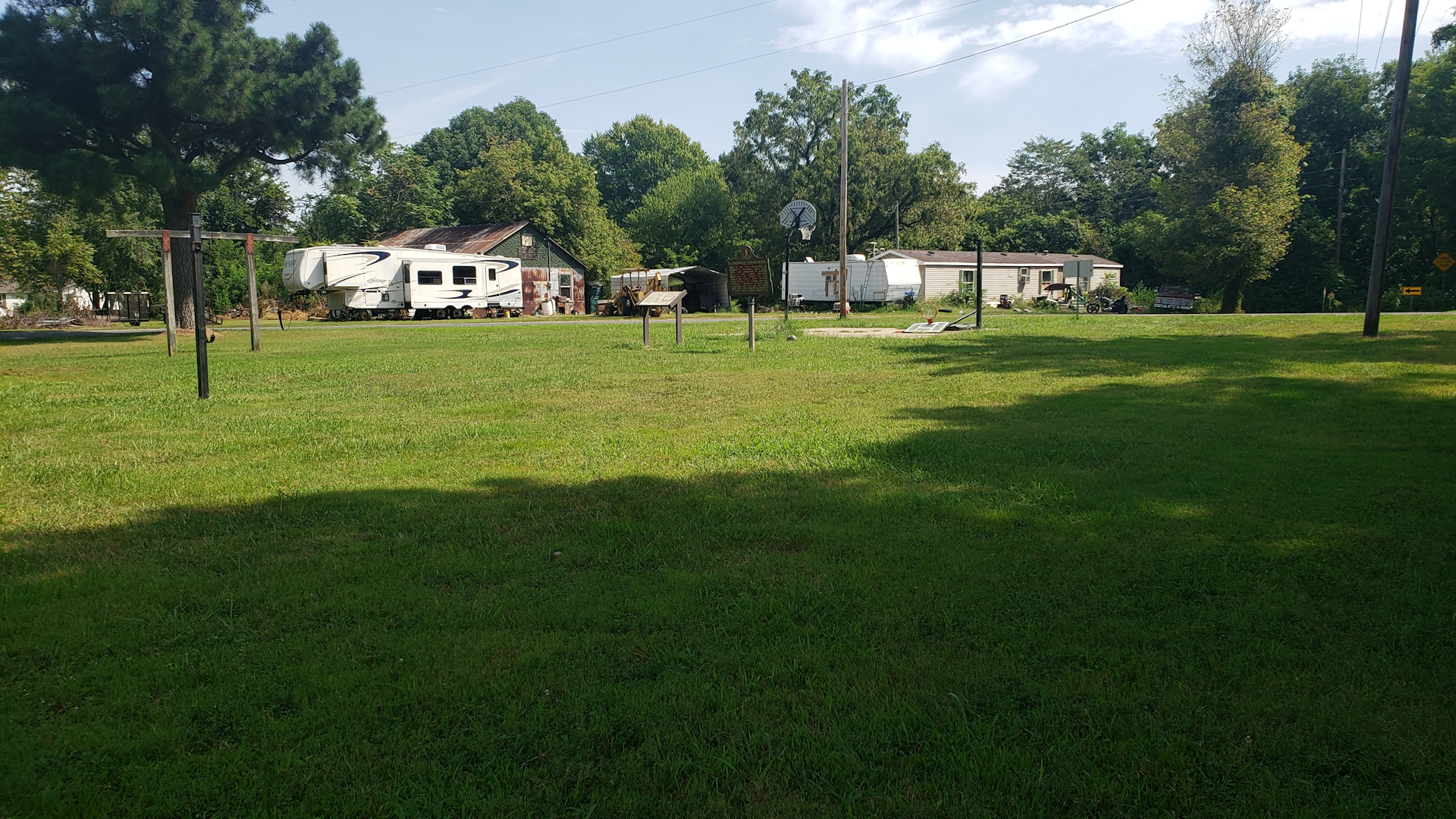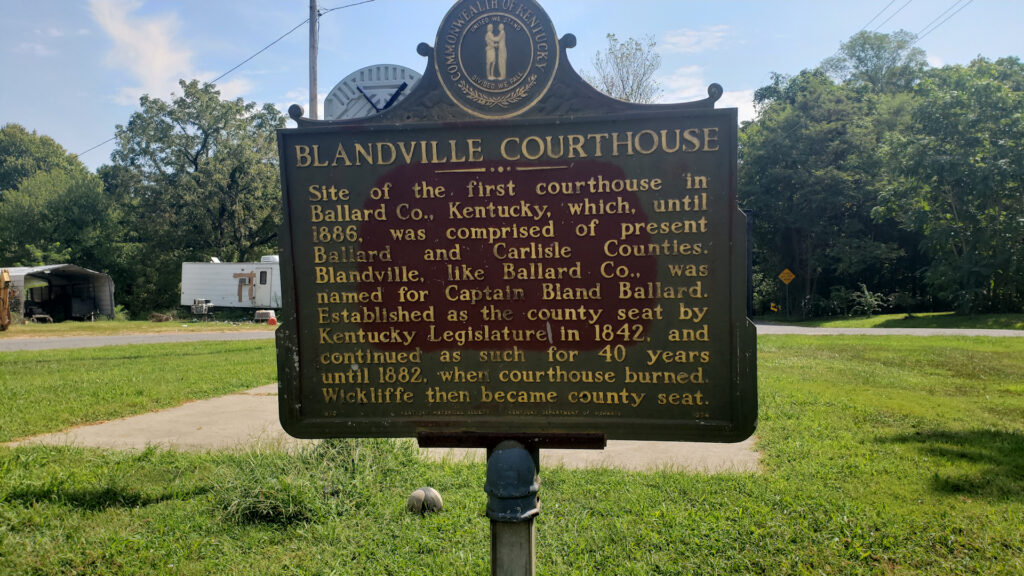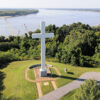Two hundred years ago, the Jackson Purchase region of Kentucky had only one county. Hickman County spanned across all the entire area, from the Mississippi River to the Tennessee River. Over time, other counties began to form out of Hickman, including Ballard. We’ve detailed how all eight counties came about in this feature.
Ballard County came about in 1842 from McCracken and Hickman and included today’s Carlisle County. Residents chose Blandville as the site for the new county seat, just about dead center of the new county.
Somewhat peculiarly, both Ballard County and Blandville are named after the same person, Capt. Bland Ballard. Although he apparently had no ties to this part of Kentucky, he fought several skirmishes and battles against the British and Native Americans in the late 1700s and early 1800s, becoming a war hero during that time.
With the selection as Blandville as the county seat, leaders held the first court in June 1842 at the home of Jackson Stovall. They built the first courthouse, a brick structure, later that year followed by the town jail in 1843. The first post office came to town on November 11, 1842.
Blandville began to grow, becoming an incorporated town on New Year’s Day 1845. It remained the county seat for several decades, but some residents became dissatisfied with the location of the county seat. It’s possible the residents believed the new seat of government would be better served if it were located on the Mississippi River, one of the most vital shipping arteries in the United States.
People living in Ballard County outside of Blandville wanted the seat moved to Fort Jefferson, an old outpost built in 1780 to protect the United States’ western border. At some point in the 1870s, a vote was held to move the seat and Blandville won out. However, citizens wanting change did not give up.
An interesting turn of events occurred on February 17, 1880, when the courthouse at Blandville burned down. It is not known how the courthouse burned down, but no doubt those wanting to move the seat took advantage of the situation.
The citizens of Ballard County held another vote on May 6, 1880, and this time they decided to move the county seat from Blandville to Fort Jefferson, which became known as Wickliffe. The vote wasn’t close, with Wickliffe winning out 1760 to 570.
The fight didn’t stop. The residents of Blandville didn’t want to lose their town’s significance. Some citizens of Blandville filed suit but lost in 1882, but they managed to get another vote two years later. By this point a courthouse had already been built in Wickliffe, so the odds were stacked against Blandville regaining its status as the center of county government. The vote was closer, with Blandville only losing by 291 votes. No other efforts were made.
At its pinnacle in 1880, Blandville boasted 476 residents. The Ballard County News, the newspaper for the area, had been published there for 15 years. At least two hotels, law offices, blacksmith shops, dry goods and grocery stores were located there. Additionally, Blandville hosted a gun shop, wagon-making company, churches and even a college. The latter was a two-story brick structure built in 1869, only to be abandoned a few years later.
With the loss of the county seat to Wickliffe, Blandville began to slowly dwindle. By 1900, nearly half of the residents had moved out of town. Forty years later, just 201 people called Blandville home.
According to an article profiling the history of Blandville in the Paducah Sun in 1950 (Feb. 12 edition), Blandville had five grocery stores at that time. That seems like a lot for a town of Blandville’s size, even for that era. But the article mentions the stores line up around or near the Blandville town circle, with the city park in the middle where the courthouse once stood.
Tracks didn’t pass through Blandville during the railroad boom and major highways missed Blandville altogether during the New Deal era of the 1930s. The 1950 article suggests that Blandville was hard to get to 70 years ago, with roads leading to the town hard to traverse, which got muddy during heavy rains.
Residents of Blandville were in high hopes of being served by a modern highway with the construction of a new road from Wickliffe to Mayfield around 1940. However, work on the road stopped at Mayfield Creek, dead ending at the new bridge crossing the creek. The project was suspended by the state indefinitely, causing residents to wonder if the “road to nowhere” would ever be completed.
It was a sight to see. For over a decade, one would travel this new road (signed as Kentucky 440) and after crossing a lovely new bridge, the road would simply disappear at the end. Maps and aerial photography from the early 1950s show the road ending at the creek.
The state finally fired up construction of the route from Mayfield Creek to Mayfield in 1954 and crews finished the road shortly afterwards. Although the new highway road passed one mile south of Blandville, a good connector road provided the locals an improved transportation route. The road was redesignated as Kentucky 121.
Today, the town of Blandville remains incorporated with only 88 residents remaining. The town does not have any form of government – no mayor or council. The post officed closed for good in 1995, after 153 years of service. All that is left is the unkempt park where the courthouse once stood, a Baptist church, and a few homes. A weathered interpretive sign is in the small park along with a historical marker.
Historic Population of Blandville
- 1880: 476
- 1900: 277
- 1920: 233
- 1940: 201
- 1960: 133
- 2000: 99
- 2020: 88
Location of Blandville
Have Information on Blandville You Want to Share?
If you have any historic photos or information of Blandville you would like to share, please get in touch with us.
Articles Related to Blandville
No posts found.
Resources
- USGS Topographical Maps
- Kentucky Department of Transportation
- The Paducah Sun – February 12, 1950 edition
- Kentucky Place Names – Robert Rennick
- History of Kentucky – Lewis Collins, 1877





